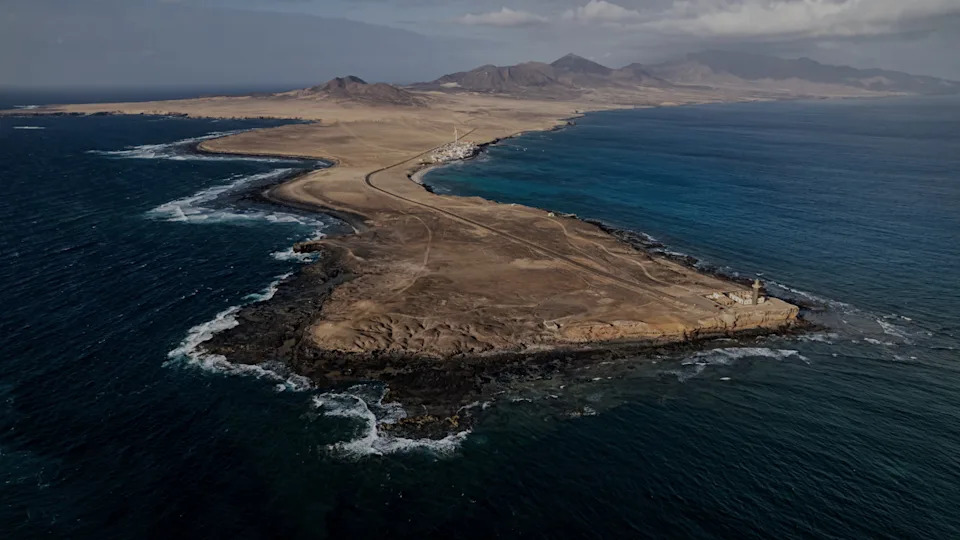Even a protected island more than 34 miles off Spain’s coast can’t hide from plastic pollution.
In a study led by Kiel University and published by Marine Pollution Bulletin, scientists surveying the bay of Illa Grossa in the Columbretes Islands marine reserve discovered the Mediterranean’s only reef-building coral blanketed with record levels of microplastics and microrubber.
What’s happening?
Researchers took five sediment samples from Illa Grossa’s bay, ultimately discovering a polluted hotspot.
Even without local pollution sources, the seafloor contained an average of 1,514 microplastic and microrubber particles per kilogram of sediment. One sample even had more than 6,300 particles.
“More than 90% of the particles were smaller than 250 micrometers — small enough to be ingested by corals,” Dr. Daniel Pröfrock of the Helmholtz Center Hereon said, per Kiel University.
Why is this discovery important?
Microplastics are tiny plastic fragments from broken-down plastic. Because they’re so small, they’re easy for humans and animals to digest. They’re also linked to numerous health issues, like cancer and fertility problems. Microrubber isn’t as widely discussed, but research shared by ScienceDaily suggests that it’s much more prevalent in the environment than microplastics.
Watch now: Giant snails invading New York City?
Microplastics and microrubber pollute bodies of water, like Illa Grossa’s bay. It’s where Cladocora caespitosa, an endangered stony coral species, grows, making these waters one of the Mediterranean’s most fragile habitats.
Coral reefs like C. caespitosa give species of fish, sea urchins, sponges, and more a place to live, often serving “as a center of activity for marine life,” according to the United States Environmental Protection Agency.
“Our findings are deeply concerning,” Dr. Lars Reuning, lead author of the study, said, per Kiel University. “Even though they pertain to a limited area of the Mediterranean, they highlight that even protected areas are severely affected by global plastic pollution, which particularly endangers sensitive coral species.”
When coral reefs break down, communities can feel the repercussions. Fewer healthy corals mean fewer fish and shellfish that local families rely on for food and income. Coral reefs also reduce wave energy by 97%, according to the Coral Reef Alliance. With fewer coral reefs, local communities could experience more flooding.
|
Do you think America has a plastic waste problem? Click your choice to see results and speak your mind. |
C. caespitosa has already faced other threats to its well-being. In a 2024 study published in the journal Science of The Total Environment, researchers found fly-ash pollution in the Illa Grossa bay. Fly ash is a toxic compound that comes from burning coal.
According to research shared in the Journal of Animal Ecology, the coral’s population has also declined during the past two decades due to significantly rising temperatures that have caused marine heatwaves in the Illa Grossa bay.
What’s being done to protect coral reefs?
Scientists are working on new technologies to keep the world’s precious coral reefs intact. One group of researchers discovered that playing ambient sounds of healthy coral reefs from underwater speakers encouraged reef-building. Another research team is experimenting with underwater robots to pinpoint and remove invasive species that harm Brazil’s coral reefs.
For C. caespitosa and the Illa Grossa bay specifically, microplastic and microrubber pollution seems to be its biggest threat. The area is a hub for trapped waste washing in from the Northern Current, as the researchers observed.
A simple way to ease the pressure on coral reefs is to use less plastic. Choose reusable bags, bottles, and containers to reduce the litter that funnels into waterways. As global plastic demand drops, fewer plastic fragments can reach vulnerable corals such as C. caespitosa, giving them a fighting chance to recover.
Join our free newsletter for good news and useful tips, and don’t miss this cool list of easy ways to help yourself while helping the planet.
Yahoo News – Latest News & Headlines
Read the full article .


